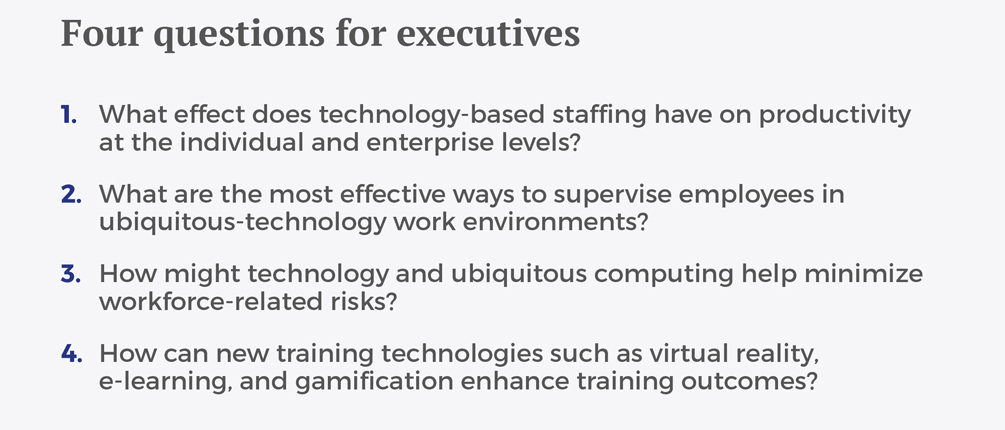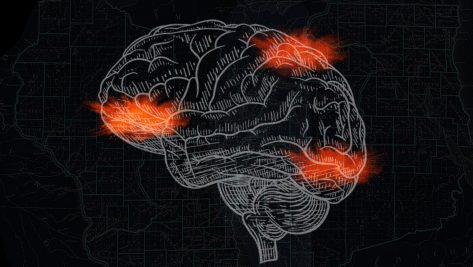New technologies—especially information and communication technologies—have shaped how we work and create value nowadays, catching many organizations off guard. Technology has altered the how, when, and where of worker interaction, affecting sociological and psychological factors within the companies that find themselves immersed in this change. But even before the advent of the Internet, some experts—such as Prof. Shoshana Zuboff—predicted the ways in which digital transformation would reshape our workspaces.
The ubiquity of computing
Given the circumstances, economic actors had some prior notice of what was to come. They may not have imagined, however, just how ubiquitous computer technology would become, thanks to the multitude of personal and industrial devices now in use. In today’s world, computational technology permeates practically all processes.
Mobile devices, smart TVs, robots, virtual reality systems, sensors, radio frequency identification… These products, among many others, have generated vast quantities of data—what we now know as big data. Governments, companies, employees, and consumers all belong to a network that links virtual spaces to the physical world.
Skills become obsolete, but experience has shown that the total number of jobs always increases.
Professions disappear, but are there really fewer jobs?
The revolutions of the past and the developments of the present have taught us a few lessons about how these changes affect companies. The first lesson is that new things do not, in fact, destroy jobs. Although professions such as typist, cashier, and travel agent have gradually disappeared, today’s machines and technologies have renewed the concepts of production and created much higher-skilled jobs. Skills become obsolete, but experience has shown that the total number of jobs always increases. This process is sometimes called the “creative destruction of jobs.”
The second lesson regarding technological progress has to do with efficiency, specifically in two areas: the operations of the production process and the professional performance of human capital. The analytical power of real-time monitoring makes it possible to develop new solutions and establish more effective work guidelines, making organizations more agile overall. It is true, however, that workers may view constant monitoring as intrusive or stressful. To avoid this outcome, monitoring should be developmental rather than control-based.
Active management
The third major lesson of ubiquitous computing is that technology per se does not guarantee profitability: active management and contextual leadership are needed in order to guarantee an impact on people. The main effects of digitalization are therefore felt among the ranks of upper managers, particularly in their capacity to manage human capital.
As new solutions emerge, executives must confront a series of questions related to talent recruitment. The Internet offers great potential in this area, opening up new possibilities for connecting with candidates. Thanks to the online world, companies can conduct new simulations or evaluations beforehand to find people with the best profile. In other words, technology can help us decide whether candidates are qualified for a particular job.
Specifically, technology affects six conventional areas of talent management: work design; workforce planning; recruitment and staffing; training and development; compensation development; and career management.
Technology can help us decide whether candidates are qualified for a particular job.
The human component: as essential as ever
These are critical issues, but ultimately the key will be to embrace new technologies with a social outlook. When the cultural context and people’s needs are taken into account, the success of management—governance, structures, decision-making, and interactions—will depend on the capacity to link professionals to the use of technologies.
A new work order is taking shape. Faced with the reality of ubiquitous computing, organizations find that they must change their models. The consequences will be positive, not only for the companies themselves but also for their teams.
Each organization’s leaders, along with other stakeholders, must grapple with an unprecedented series of questions and determine how the adoption of technologies will affect the development of people. It’s not crazy to suggest that these questions should be addressed publicly in order to optimize processes and minimize social risks.

© IE Insights.











